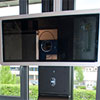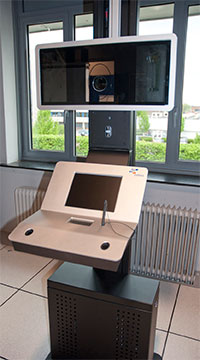
Zetes Produces Senegalese Biometric Visa with Lumidigm Fingerprint Sensors
Lumidigmannounced that Zetes is producing the  new Senegalese biometric visa with integrated biometric enrollment stations that incorporate two Lumidigm V-Series fingerprint sensors in each automated Zetes console. Sixty-six fixed enrollment stations at embassies, consulates and border posts will capture biographic and biometric information for the issuance of International Civil Aviation Organization (ICAO) compliant visas for travel to Senegal. The contract was awarded to Zetes by SNEDAI (Société Nationale d'Edition de Documents Administratifs et d'Identification), which is charged with securing identity documents for the country.
new Senegalese biometric visa with integrated biometric enrollment stations that incorporate two Lumidigm V-Series fingerprint sensors in each automated Zetes console. Sixty-six fixed enrollment stations at embassies, consulates and border posts will capture biographic and biometric information for the issuance of International Civil Aviation Organization (ICAO) compliant visas for travel to Senegal. The contract was awarded to Zetes by SNEDAI (Société Nationale d'Edition de Documents Administratifs et d'Identification), which is charged with securing identity documents for the country.
Patrick Andries, Zetes director solution engineering, commented, “In order to offer customers the best technologies, Zetes is constantly on the lookout for state-of-the-art solutions. As a leading ID-solution provider on the African continent, Zetes is often confronted with difficulties when capturing biometric information. The Lumidigm solutions integrated in the Zetes biometric enrollment stations have dramatically reduced the number of people that could not be registered because of poor quality biometrics, therefore improving the overall quality of the collected data.”
The new visa enrollment station features the integration of biographic, photographic and biometric registration along with a digital signature in a single station that is easy to deploy. Ergonomics have been optimized for both travelers and the operators in charge of the registration. The new visa stations are very easy to maintain.
“Multispectral imaging is a sophisticated technology specifically developed by Lumidigm to overcome the fingerprint capture problems found with conventional imaging systems, by leveraging both surface and deep subsurface characteristics of the skin,” added Bill Spence, Lumidigm vice president of sales North America, Europe and Australia. “This is the perfect application to take full advantage of our technology’s benefits and see an immediate higher level of customer satisfaction and return on investment.”
Under the SNEDAI contract, Zetes is also responsible for data consolidation and AFIS (Automated Fingerprint Identification System) de-duplication based on biographic and biometric data. The build-operate-transfer (BOT) contract will be implemented over a 5-year period and produce an estimated 300,000 visas each year. In addition, Zetes has also set up an on-line payment solution through its subsidiary FasTrace. This will allow applicants to order and pay for visas directly from the SNEDAI website.